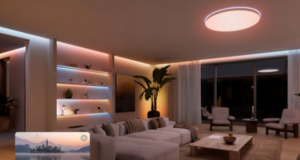
If you’re building or renovating a home, you’ll hear the term lock-up stage come up pretty early in your project. But what exactly does it mean—and why does it matter?
In simple terms, the lock-up stage is when your home can be secured from the outside world. That means the external structure is complete enough to “lock up”—usually once the walls, roof, windows and external doors are installed. It’s a major milestone in construction, and in most cases, it also triggers a significant progress payment. Here’s what you need to know.
When does the lock-up stage occur?
Lock-up typically comes after the frame stage and before internal fit-out begins. By this point, your home should have:
- External cladding or brickwork complete
- Wall wrap or building wrap installed
- Fascia and soffits fixed in place
- All windows and external doors installed (or temporary doors that can be locked)
- Garage door installed (if applicable)
Some contracts may also include roofing, insulation or plasterboard in this stage—so it’s important to check your building contract for the exact definition.
Why is lock-up important?
Reaching lock-up means the internal structure is now protected from the weather, pests and theft. That makes it a key handover point between the external and internal stages of your build. From here, interior work like plumbing, wiring, insulation and plastering can begin without exposing materials to the elements.
Lock-up also plays an important financial role. Most residential building contracts in Australia are divided into progress payments, and lock-up is one of the major ones. Because it usually accounts for a large percentage of your total build cost, you’ll want to make sure the work is completed to spec before releasing payment.
Are temporary doors okay?
Yes. Many builders use temporary lockable doors during this stage to avoid damaging the final doors while trades are still coming and going. As long as the home can be locked up securely, temporary doors still count toward meeting the lock-up requirement.
Can I access the site at lock-up?
Technically, yes. But it’s not as simple as turning up with your own key.
Once your home reaches lock-up, it becomes a controlled worksite. Only authorised people, like your builder and subcontractors, can enter freely. If you’d like to inspect the work, you’ll need to organise a walkthrough with your builder. You may also be required to complete a safety induction or wear PPE, depending on the site conditions.
If you’re hiring an independent building inspector to check the quality of work before making a payment, your builder should allow reasonable access for this to take place.
What happens after lock-up?
With the home secured, internal trades can begin. This next phase often includes:
- Plumbing and electrical rough-ins
- Wall and ceiling insulation
- Plasterboard installation
- Internal carpentry and fit-off (doors, skirtings, architraves)
- Waterproofing and tiling
- Prime cost item installation (tapware, fittings, kitchen appliances)
Keep in mind that prime cost items are usually installed later in the build to minimise the risk of theft or damage. Even though the home is locked up, it’s still an active worksite, and things like ovens and mixers can disappear if installed too early.
Before you make your payment
Because lock-up triggers a major progress payment, it’s worth taking a moment to:
- Revisit your contract and confirm what’s included in this stage
- Arrange an inspection to check the work meets Australian Standards and the National Construction Code (NCC)
- Make sure the home is secure and weatherproof
- Clarify what remains to be completed in the next stage
Final thoughts
The lock-up stage marks a big turning point in your home’s construction. From here, the focus shifts inward, and things will start to take shape much more quickly. As long as you’ve clearly defined what lock-up includes in your contract, and you’re keeping communication open with your builder, this can be one of the most rewarding stages of the build.





